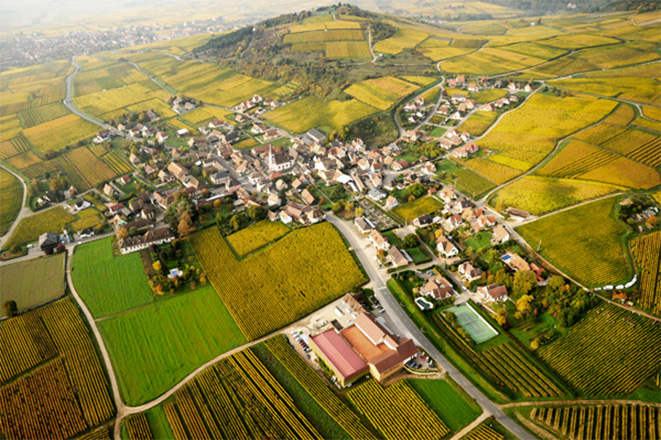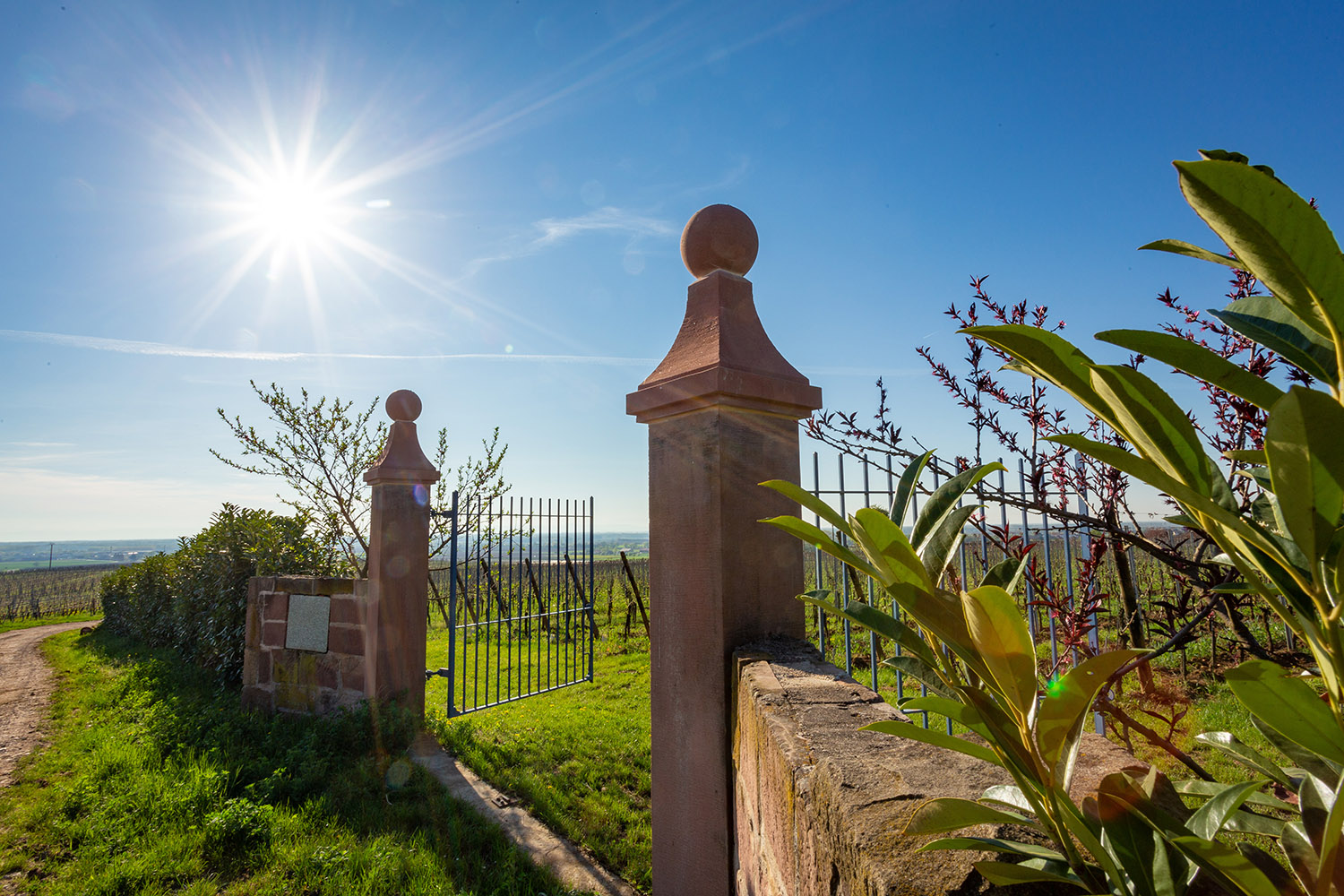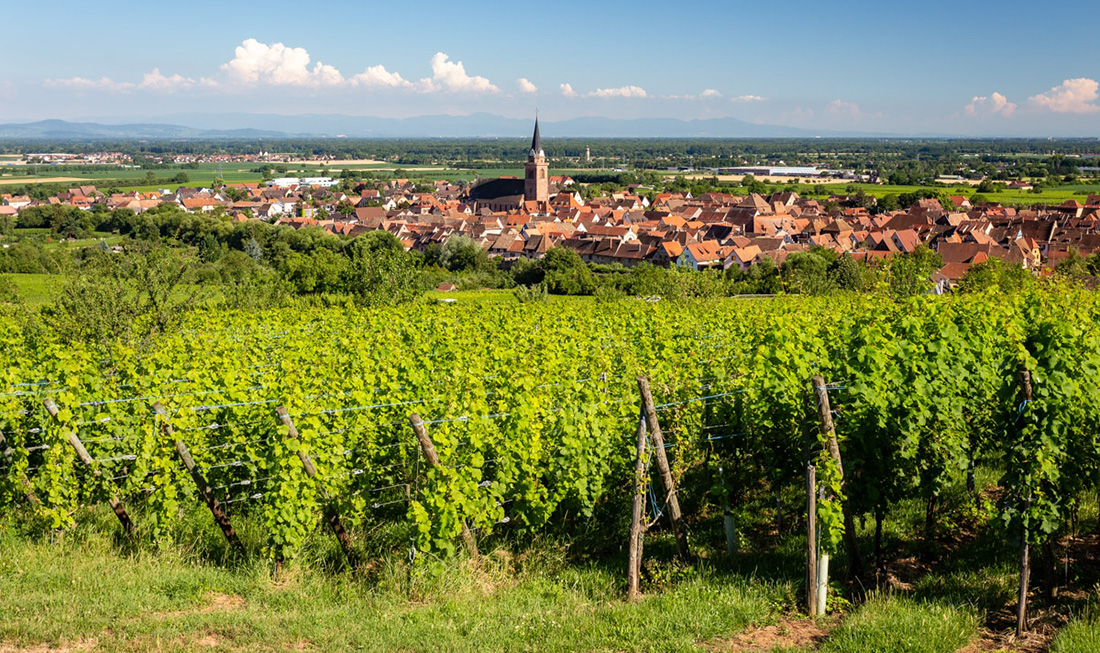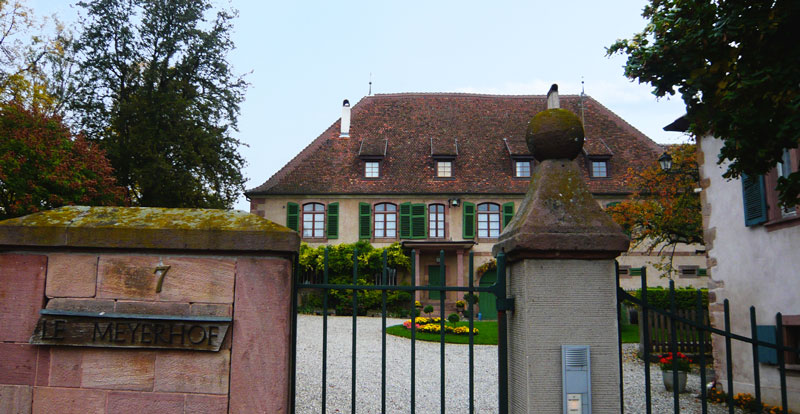Vineyards and terroirs

A great vineyard,
a living mosaic of terroirs
The entire vineyard of 62 hectares of OWN HARVEST is spread over more than 160 sites in 8 different villages ! The whole thing is a veritable mosaic of terroirs!
Each site has its own identity made up of soil, grape variety and planting age, exposure and microclimate. The imprint of these different terroirs gives our wines an extra soul, a unique and complex touch. This alchemy shapes the diversity and complexity of Engel wines.


The geological predominance is marly-clayey-limestone in the communes of Rorschwihr and Bergheim and confers power and generosity.
In the other villages, the granitic, gneissic and loess soils bring finesse and aromas.
This variety of soil is favourable to the development of the many Alsatian grape varieties. The wines produced on each of these sites offer unique traits.
Four Grands Crus crown our range (Praelatenberg, Gloeckelberg, Mandelberg, Altenberg de Bergheim). They give birth to structured and elegant wines, with a complex aromatic expression that characterises great wines.


Since 2008, the Fernand Engel estate has also had the privilege of managing the vineyards of Château du Meyerhof. This superb 12th century residence bears witness to Rorschwihr's past. Numerous documents tell of the excellence of the wines produced on these lands. A line of popes and important historical figures (Clement III, Pépin le Bref,...) have had the privilege of tasting these famous wines.
Beyond the complexity of its soils and the variety of its sites, the estate enshrines its identity in the preservation of this extraordinary heritage. The practice of organic viticulture, respectful of its ecosystem, sustains the virtues of this vineyard.

More...
The main types of soils
- Rorschwihr-Bergheim :
Calcareous brown soil on Early Jurassic and Oligocene Marl, on loess and hard limestone. Produces generous, powerful wines that are ideal for cellaring.- Orschwiller-St Hippolyte-St Pierre :
Stony, glossic grey-brown podzolic soils. Acidic cambisols on stony alluvium. Calcic cambisols on deep loess subject to low levels of leaching.
Produces very aromatic wines, which may be cellared depending on the vintage in question.- Rotenberg (Bergheim) :
Limestone, stony and ferruginous marl soil.
Wine profile: very fruity, charming, radiant and powerful, good length on the palate.- Silberberg (Rorschwihr) :
Terroir composed of clays on silicified muschelkalk.
Wine profile: distinguished and virile, complex and marked acidity, delicate bouquet, lemon and lemongrass aromas.- Kugelberg (Rorschwihr) :
Clay and limestone soil on oolitic limestone.
Wine profile: vanilla notes, beautiful intensity of overripe and candied fruits, brioche and toasted notes. Soft attack, beautiful maturity.- Clos des Anges (Rorschwihr) :
Clay-limestone soil on hard orange-yellow limestone substrate.
Wine profile: Powerful and very concentrated in a sweet style. Rare elegance and great purity. Very wide aromatic range. Notes of over-ripeness (exotic fruits, honey and candied fruits).- Grand Cru Altenberg de Bergheim :
Red Jurassic marl and limestone soil, very stony, rich in fossils. This vineyard runs on the south face of the Grasberg nipple. It is located in the heart of the Ribeauvillé fault field. Renowned since the XII century.
Wine profile: Presents both a mellow character and a marked freshness typical of this Grand Cru. Subtle aromatic expression. Notes of candied fruit, almonds and spices... synonymous with concentration and botrytis. Powerful and distinguished wines for keeping.- Grand Cru Gloeckelberg (Rodern) :
Brown acid and sandy soil and more or less clayey, outcropping the schists and sandstones of the carboniferous, as well as the Vosges sandstones which crown the hill. Granitic substrate. Facing south and southeast. Quoted since the Middle Ages, and formerly property of the convents of Colmar.
Wine profile: Fine, light and very persistent on the palate. Round and smooth.- Grand Cru Praelatenberg (Kintzheim) :
Shallow heavy siliceous soil on metamorphic bedrock (gneiss and granite). Cited as early as 823, this grand cru belonged to the prelates of Ebersmunster Abbey.
Wine profile: Intense nose of passerillage and beeswax. Lively and delicate attack. Beautiful minerality. Fine and elegant.
The history of Rorschwihr
Bronze age artefacts and remains from the Roman period allow us to date the beginnings of Rorschwihr to well before the moment at which it first appears in written history under the name of « Chrodoldesvillare ».
The village and its vineyard were in the possession of a Frankish nobleman, Rantwig, in 742, before becoming a fief of the Lord’s domain of Ribeaupierre. In 1313, the Ribeaupierre family simultaneously ceded Rorschwihr and the town of Bergheim to the Hapsburgs, thus tying Rorschwihr’s destiny with that of this neighbouring town.
Several religious institutions, most notably the Abbey of Wissembourg, the monasteries of Ebersmünster and Moyenmoutier and the convent of Silo de Sélestat, owned vines at Rorschwihr during the Middle Ages and harvested Communion wine in the « Silberberg » and « Kugelberg » plots.

